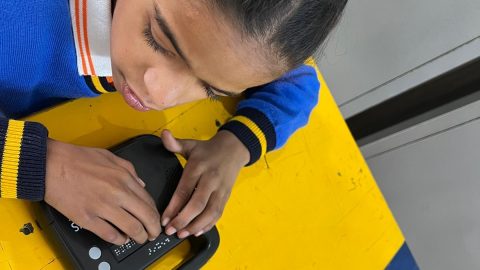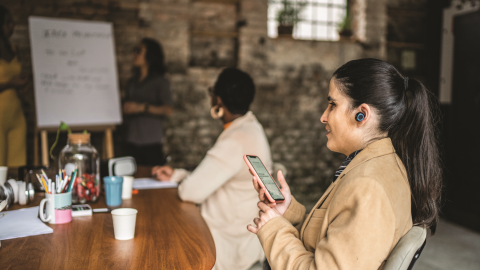Increasing access to education for people with disabilities
Around the world 2.2 billion people have a form of vision disability according to WHO. As disabilities affect people of all ages, it’s critical that education is accessible to all and ensures equitable access to children and adults alike. However, the reality is there are currently barriers in education for those who are blind or have low vision, including the lack of accessible textbooks and classroom materials. This is what is commonly referred to as a “book famine” in the print disabled community.
Founded initially as self-advocacy group for people who are blind or low vision with an interest in STEM, I-Stem aims to enhance access to this otherwise inaccessible content for people with print disabilities. Through their past experience having experienced the challenges first-hand as blind co-founders, coupled with their experience in engineering and AI, the team uses AI to address this barrier faced by their community. Through support from Microsoft’s AI for Accessibility grant program, I-Stem technology utilizes Microsoft’s Azure which helps to recognize inaccessible text and extract it for further processing. This then is processed with custom models that help identify the layout and structure of the document, thereby retaining the formatting and semantic representation of the document.
However, even with their advanced AI systems, there’s always potential for mistakes. To bridge this gap, I-Stem combines AI with human intelligence, including a human remediator to correct issues, such as a table that was not identified correctly. To make this process seamless and efficient for remediation at scale, the team has developed a remediation portal. This retrieves the AI-generated output, then provides an intuitive interface for remediators to fix any errors, both in terms of the layout as well as content recognition. Currently being used by individuals, non-profits, education institutes and other enterprises, the goal of this portal is to help accelerate the creation and conversion of accessible content.

I-Stem is committed to exploring and providing optimal ways in which people with disabilities can access content. As they continue to improve their remediation portal to scale their impact, they are also exploring how the latest in AI, particularly generative AI, can drive additional innovation and a better user experience.
Connected resources:








